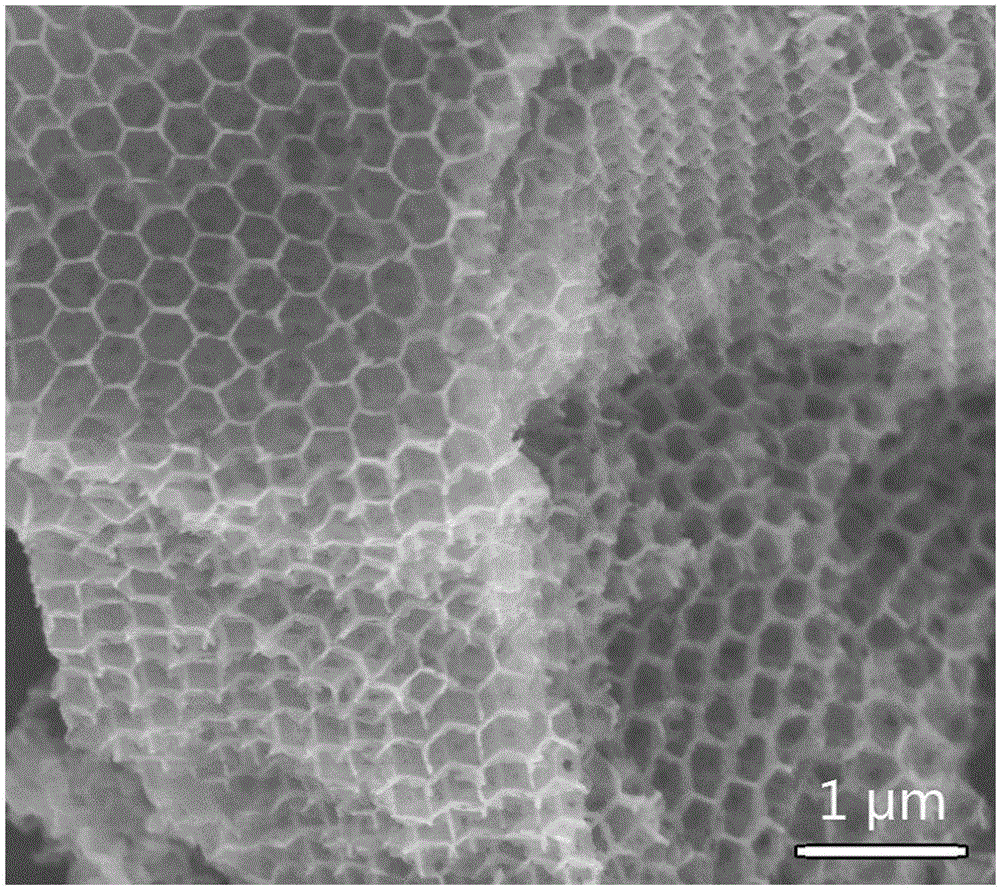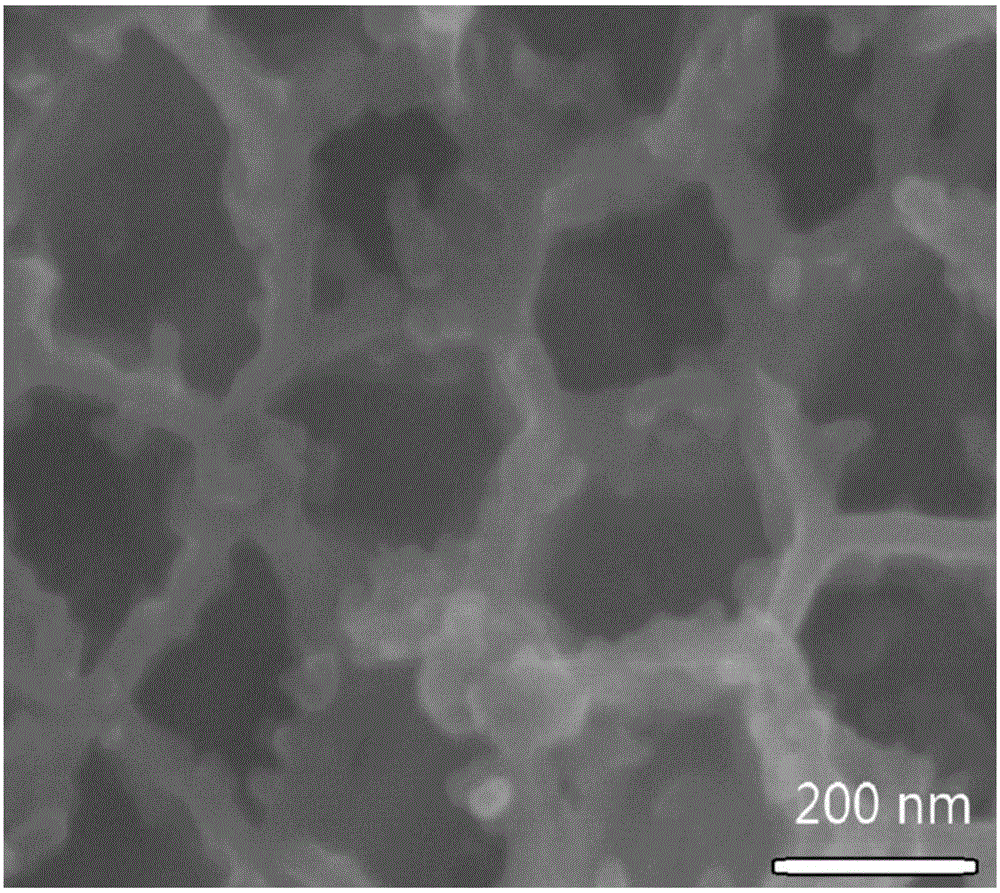Application of cobalt oxide particles loaded three-dimensional, macroporous structured molybdenum dioxide material as anode electrocatalyst
A three-dimensional macroporous, molybdenum dioxide technology, applied in the direction of metal/metal oxide/metal hydroxide catalysts, physical/chemical process catalysts, electrodes, etc., can solve problems such as plastic deformation and performance degradation, and achieve increased current density Large, catalytic performance improvement, short time-consuming effect
- Summary
- Abstract
- Description
- Claims
- Application Information
AI Technical Summary
Problems solved by technology
Method used
Image
Examples
Embodiment 1
[0021] Take 2g of the template and put it into 10ml of 0.05M MoCl 5 Put the beaker into a 50°C incubator, seal the beaker to prevent the volatilization of water, and oxidize the solution in about two days, filter it several times and dry it to obtain a blue solid. Put this solid in a crucible and put it into a heating furnace that can pass through a protective atmosphere, heat treatment for 2 hours from 20°C to 650°C under the protection of flowing argon atmosphere, and the heating rate is 5°C / min, and then cool with the furnace to obtain Three-dimensional macroporous MoO with a pore size of 200 nm 2 .
[0022] Obtained MoO 2 20 mg into 4ml 5M Co(NO 3 ) 2 The solution of water and ethylene glycol, in which the ratio of solvent water to ethylene glycol is 1:1, sealed and placed in a 50°C incubator, left for 12 hours and then suction filtered to obtain a black solid, dried and heated in vacuum at 350°C for 2 hours, then Three-dimensional macroporous structure MoO with pore...
Embodiment 2
[0024] Take 2g of the template and put it into 10ml of 0.05M MoCl 5 Put the beaker into a 50°C incubator, seal the beaker to prevent the volatilization of water, and oxidize the solution in about two days, filter it several times and dry it to obtain a blue solid. Put this solid in a crucible and put it into a heating furnace that can pass through a protective atmosphere, and heat it from 25°C to 640°C for 1.5 hours under the protection of a flowing argon atmosphere, and the heating rate is about 8°C / min. After cooling in the furnace, a three-dimensional macroporous MoO with a pore size of 350 nm was obtained. 2 .
[0025] Obtained MoO 2 20 mg into 4ml 5M Co(NO 3 ) 2 The solution of water and ethylene glycol, wherein the ratio of solvent water to ethylene glycol is 1:1, sealed and placed in a 50°C incubator, left for 13 hours and then suction filtered to obtain a black solid, dried and heated at 400°C for 2 hours in a vacuum, then Three-dimensional macroporous structure Mo...
Embodiment 3
[0027] Take 2g of the template and put it into 10ml of 0.05M MoCl 5 Put the beaker into a 50°C incubator, seal the beaker to prevent the volatilization of water, and oxidize the solution in about two days, filter it several times and dry it to obtain a blue solid. Put this solid in a crucible and put it into a heating furnace that can pass through a protective atmosphere, and heat it from 22°C to 645°C for 2 hours under the protection of a flowing argon atmosphere, and the heating rate is about 8°C / min. After cooling in the furnace, a three-dimensional macroporous MoO with a pore size of 400 nm was obtained. 2 .
[0028] Gained MoO2 20 mg put into 4ml5M Co(NO 3 ) 2 The solution of water and ethylene glycol, in which the ratio of solvent water to ethylene glycol is 1:1, is sealed and placed in a 50°C incubator, and after 12 hours of suction filtration, a black solid is obtained. After drying, it is heated in vacuum at 380°C for 2 hours, and then Three-dimensional macroporou...
PUM
| Property | Measurement | Unit |
|---|---|---|
| pore size | aaaaa | aaaaa |
Abstract
Description
Claims
Application Information
 Login to View More
Login to View More - R&D
- Intellectual Property
- Life Sciences
- Materials
- Tech Scout
- Unparalleled Data Quality
- Higher Quality Content
- 60% Fewer Hallucinations
Browse by: Latest US Patents, China's latest patents, Technical Efficacy Thesaurus, Application Domain, Technology Topic, Popular Technical Reports.
© 2025 PatSnap. All rights reserved.Legal|Privacy policy|Modern Slavery Act Transparency Statement|Sitemap|About US| Contact US: help@patsnap.com



